Israel’s History with the Victims of the Golan Heights Rocket Strike
A strike in Israeli-occupied Syrian Golan Heights killed 12 children of the Druze community, which has a history of resistance to Israeli colonialism. Members of the Druze minority protest a visit by Israeli Prime Minister Benjamin Netanyahu to the site where 12 children were killed in a rocket strike in the village of Majdal Shams, in the Israeli-annexed Golan Heights on July 29, 2024. (AP Photo/Leo Correa)
Members of the Druze minority protest a visit by Israeli Prime Minister Benjamin Netanyahu to the site where 12 children were killed in a rocket strike in the village of Majdal Shams, in the Israeli-annexed Golan Heights on July 29, 2024. (AP Photo/Leo Correa)
The death of 12 children in the town of Majdal Shams, in the occupied Syrian Golan Heights on July 27 put Hezbollah and Israel on the brink of a wider confrontation once again. After the attack, Israel announced that the explosion was caused by an Iranian-made rocket, fired by Hezbollah. The Lebanese group denied the accusation and said that the explosion was caused by an Israeli iron dome round that malfunctioned.
Prime Minister Benjamin Netanyahu, who interrupted his visit to the United States to return to Tel Aviv upon the news, pledged a harsh retaliation against Lebanon. Hezbollah, for its part, said that any Israeli attack on Lebanon will be responded to proportionally.
Nevertheless, on July 30, a reported explosion in the heart of Beirut was said to be the result of an Israeli attack. And again, the looming threat of a regional confrontation became evermore pronounced.
At the center of this escalation and the subsequent Israeli spectacle are the residents of Majdal Shams, who mourned their children in a massive funeral, which was marred by the presence of Israeli politicians such as Netanyahu and far-right Finance Minister Bezalel Smotrich. Netanyahu spoke to the media, condemning the attack that killed “Israeli citizens,” referring to the deceased as “our children.” But contrary to Netanyahu’s attempt to portray the attack as an attack on Israel, he and Smotrich were met with indignation by hundreds of angry mourners who kicked the politicians out, calling them “murderers” and other expletives on their way out.
Contrary to Netanyahu’s attempt to portray the attack as an attack on Israel, he and far-right Finance Minister Bezalel Smotrich were met with indignation by hundreds of angry mourners who kicked the politicians out.
Across international mainstream media, the people of Majdal Shams have been referred to as both “Druze Arabs” and “Druze Israelis,” and their town has been referenced both by the media and by Israeli politicians as just another “Israeli” town. Similar to Netanyahu’s reference to “our children,” these titles and designations obscure the national identity of the Druze people who live in the occupied Golan Heights and their political reality.
Saturday’s killing of the 12 Syrian children in the Golan brought the people of the Golan and Israeli authorities back to confrontation, after Israel’s attempt to manipulate the tragedy to stoke further confrontation with Hezbollah. Not only by portraying the victims as Israeli citizens, which is historically, politically and factually false, but also by Netanyahu’s and Smotrich’s presence in Majdal Shams. Dozens of Syrians protested in front of the building where Netanyahu met local figures and delivered his statements and threats to Lebanon. “You want to use the Druze now. You want to use our children. You are a liar and nobody in the world believes you,” a protester shouted at Netanyahu as he arrived.
The incident comes as the latest episode of a long history of Israeli attempts to exploit the Syrian people of the Golan and the Druze community, and the community’s resistance to it, holding to its identity. This time, the Golan Syrians find themselves at the center of a larger, regional war, where their particular cause seemed to be forgotten.
So, who are the people of the Druze community in the occupied Golan Heights? And why is it important to understand their background in the context of the ongoing escalation between Israel and Lebanon?
Struggle for identity
On Tuesday, in an interview with the Egyptian satellite channel al-Mashhad, an elder of the Druze community in Majdal Shams, Sheikh Ezzat Al-Safadi, said that the community has no evidence and has no means to verify if the explosion that killed the town’s youth was due to a Hezbollah rocket. In response to a question by the interviewer about whether the community felt closer to Israel or to Syria, Sheikh Al-Safadi replied that “our national identity isn’t closer to one side or the other, but it is a matter of fact; we are Arab Syrians.”
The Druze people are an Arab and Arabic-speaking minority ethnoreligious group who live primarily in Syria, Lebanon, Jordan and historic Palestine. They adhere to the Druze faith, which draws on tenets from Abrahamic and monotheistic faiths, as well as the belief in reincarnation and the eternity of the soul.
The Golan Heights were occupied by Israel in the 1967 war, along with the Palestinian territories of the West Bank, East Jerusalem and the Gaza Strip. Syria liberated a strip of the Golan Heights territory in the 1973 war and signed an armistice with Israel at the end of the conflict which left the larger and most strategic part of the Golan in Israel’s hands, including Majdal Shams. Since then, Syrian families on both sides of the armistice line have been separated, for years communicating through loudspeakers across the buffer line.
The Druze people are an Arab and Arabic-speaking minority ethnoreligious group, who live primarily in Syria, Lebanon, Jordan and historic Palestine.
In 1981, Israel passed the ‘Golan law’ annexing the occupied Golan Heights and making it officially part of Israel. The move has been considered illegal by the international community, including the United States, until Donald Trump unilaterally recognized Israel’s sovereignty in the Golan in 2019.
A year before the annexation, Israel amended its nationality law – which determines, among other things, who is eligible for Israeli citizenship and national rights, and notably excludes millions of Palestinians of Palestinians under Israeli control – to include the Golan Syrians, who historically have overwhelmingly refused Israeli citizenship. In March of 1980, around 6,000 people from across the occupied Golan Heights gathered in a mass meeting at Majdal Shams, where the attendants decided to impose a social and religious excommunication of any person who accepted Israeli nationality.
Until this day, the immense majority of the people of the Golan have not taken Israeli citizenship and continue to be “permanent residents” under Israeli law. At the heart of the fight over citizenship has always been the fight over compulsory military service in the Israeli army, which Israel has tried to impose on the people of the Golan in the same way that it imposed it on the Palestinian Druze community. To this day, Syrians in the Golan do not serve in the Israeli army.
Struggle for land
While Israel offered its citizenship to the Syrians of the Golan, it colonized their land. During and in the immediate aftermath of the 1967 war, some 138,000 Syrians were forced to flee into Syrian territory and were not allowed back. Those who remained in their lands have been living in six towns; Masada, Baqaatha, Ain Qenya, Sahita, Ghajar and Majdal Shams, the largest. In 1967, the people of the six towns owned over 100,000 dunams of land (about 39 square miles). Over the years, Israel has confiscated around 56 percent of their land, turning it into natural reserves and military zones and building some 45 settlements, where some 29,000 Israelis settle today, almost matching the 29,000 Arab Syrian indigenous population.
During and in the immediate aftermath of the 1967 war, some 138,000 Syrians were forced to flee into Syrian territory and were not allowed back.
The resistance of the people of the Golan has continued until recent years. At each election round, the Golan Syrians organize boycott campaigns to municipal elections, which they are entitled to as “permanent residents.” In 2019, some media outlets reported empty voting posts in the six towns, while hundreds of protesters gathered outside voting centers, holding Syrian flags and the distinctive color-striped flags of the Druze community, voicing their rejection of all candidates. Earlier, the community elders issued a warning of excommunicating and boycotting any person who cast a vote.
In June of last year, occupied Golan Syrians staged mass protests in rejection of an Israeli project to install wind farms in their lands. The protests turned into violent clashes between Israeli police and protesters, where four protesters and 12 Israeli police officers were injured. The project was approved for construction despite the protests.
As the cause of the Golan and its people resurfaces in the midst of the current war, it serves as a reminder of the core issue of the decades-long conflict that today ignites the region, from Gaza to Lebanon; a struggle for the land, the identity and the existence of all indigenous peoples of the region, in the face of Zionist colonialism.
Your support is crucial…With an uncertain future and a new administration casting doubt on press freedoms, the danger is clear: The truth is at risk.
Now is the time to give. Your tax-deductible support allows us to dig deeper, delivering fearless investigative reporting and analysis that exposes what’s really happening — without compromise.
Stand with our courageous journalists. Donate today to protect a free press, uphold democracy and unearth untold stories.
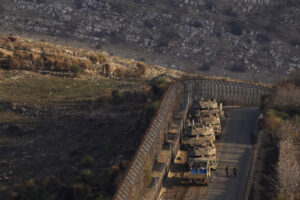
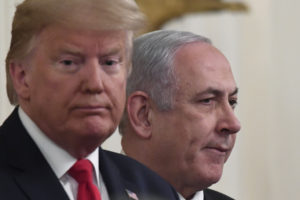
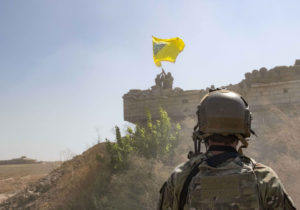
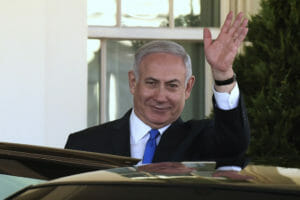
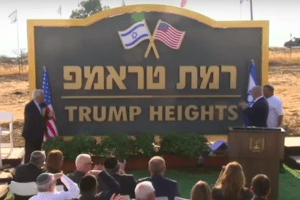
You need to be a supporter to comment.
There are currently no responses to this article.
Be the first to respond.